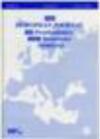European Journal of Prosthodontics and Restorative Dentistry
The Acidic and Erosive Potential of Five Sports Drinks
Abstract
Sports drinks are becoming increasingly popular as we are all being encouraged to adopt a healthier lifestyle with regular exercise. However, many of these products are based on acidic fruits and may contribute to erosion. The aim of this study was to screen a number of these products for their potential to cause enamel erosion in vitro. The erosive potential of a number of readily available sports drinks was assessed in the laboratory by measuring their pH, neutralisable acidity and their ability to erode enamel. These were compared to a positive control, orange juice and a negative control, water. The pH of the sports drinks ranged from 3.16– 3.70 with their neutralisable acidity ranging from 9.74–13.44 mls of 0.1M NaOH. The amount of enamel removed following 1-hour immersion in the sports drinks ranged from 1.18–5.36 microns. In comparison, the orange juice control had a pH of 3.68, a neutralisable acidity of 19.68 mls of 0.1 M NaOH and removed 3.24 microns of enamel. Many of the sports drinks tested were found to be erosive. This information will be of use to clinicians when counselling patients with tooth surface loss who use fruit based sports drinks regularly.
KEY WORDS: Dental erosion, dental enamel, non-carious tooth surface loss
INTRODUCTION
Dental erosion is defined as an irreversible loss of dental
hard tissues due to a chemical process without the
involvement of microorganisms1. This process may be
caused by extrinsic or intrinsic agents. Extrinsic agents
include acidic food stuffs, beverages and snacks consumed
as part of the daily diet. Extrinsic erosion may also occur
following environmental exposure to acidic agents2,3.
Intrinsic causes are associated with gastric acid and may
present intra-orally following vomiting, regurgitation,
gastro-oesophageal reflux or rumination4.
The popular literature and media extol the virtues of a
healthy lifestyle. Regular exercise and a healthy diet are
being endorsed by central government in an attempt to
prevent obesity and life threatening diseases such as
diabetes and heart disease. Strenuous exercise quickly
results in dehydration and depletion of energy stores
which can lead to reduced physical and mental performance. Although these effects can be combated by the
regular ingestion of water both during and after exercise,
there is some evidence to show that commercially available sports drinks are more effective than water at
maintaining optimal performance levels and augment
recovery following exercise5,6. Sports drinks are essentially water based but also contain carbohydrates as a
ready energy source, electrolytes that replace lost ions
and B group vitamins that help release energy6. They are
also isotonic; this encourages rapid absorption once ingested. However, all these drinks are based on natural
fruits and therefore may have an erosive potential.
Sports drink use amongst athletes is very common, with
over 90% of athletes using these products on a regular
basis7. These products are also advertised aggressively
by the manufacturersÂ’ and their use is publicly endorsed
by many famous elite athletes. However, the link
between the consumption of sports drinks and erosion
amongst athletes is still rather tenuous. Some case
reports have suggested a relationship between sports
drinks consumption and erosion8–11 and Milosevic12 has
demonstrated an association between erosion and sports
drink consumption. However, Mathew et al7 examined a
group of over 300 University based athletes in the United
States, but could not show a statistically significant association between erosion and the use of sports drinks. One
explanation for this is that sports drinks often have a low
viscosity12 and are likely to be cleared quickly from the
mouth.
The aim of this study was to compare a number of
commercially available sports drinks and compare these
with water and orange juice. The hypothesis used in this
study was that the sports drinks would not be more
erosive than orange juice.
MATERIALS AND METHODS
The sports drinks chosen for inclusion in this study are
listed in Table 1. These drinks were chosen as they were
readily available to the public at a major supermarket.
Other sports drinks are powder based requiring the addition of water and therefore the sample tested here may
not be totally representative of all sports drinks.
Initial pH
* BDS, MScD, FDSRCS (Ed), PhD, ILTM
†
IBMS
#
BDS, MScD, FDSRCS, FDS (Rest Dent), DRD, MRD RCS (Ed), ILTM
The pH of each of the drinks was tested using an electronic pH meter (Orion Research Inc.) at 37°C on a heated
magnetic stirrer. The pH meter was calibrated using test
Authors
Jeremy Rees, Theresa Loyn†, Robert McAndrew
Articles from this issue
 Free Access
Free Access No Access
No Access Full Access
Full Access


